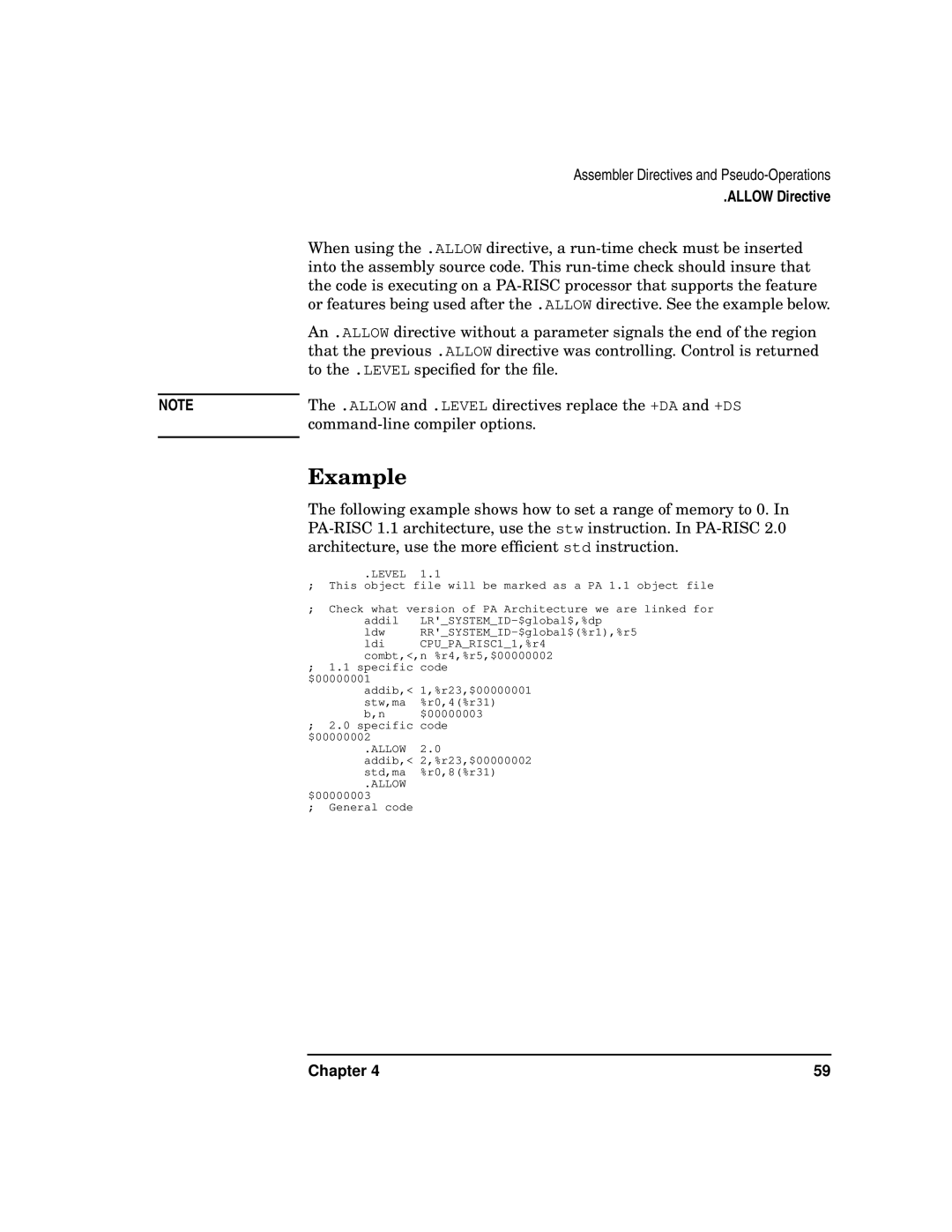Assembler Directives and
.ALLOW Directive
| When using the .ALLOW directive, a |
| into the assembly source code. This |
| the code is executing on a |
| or features being used after the .ALLOW directive. See the example below. |
| An .ALLOW directive without a parameter signals the end of the region |
| that the previous .ALLOW directive was controlling. Control is returned |
| to the .LEVEL specified for the file. |
| The .ALLOW and .LEVEL directives replace the +DA and +DS |
NOTE | |
| |
|
|
Example
The following example shows how to set a range of memory to 0. In
.LEVEL 1.1
;This object file will be marked as a PA 1.1 object file
;Check what version of PA Architecture we are linked for addil
ldw
ldi CPU_PA_RISC1_1,%r4 combt,<,n %r4,%r5,$00000002
;1.1 specific code
$00000001
addib,< 1,%r23,$00000001 stw,ma %r0,4(%r31)
b,n $00000003
;2.0 specific code $00000002
.ALLOW 2.0
addib,< 2,%r23,$00000002 std,ma %r0,8(%r31)
.ALLOW
$00000003
;General code
Chapter 4 | 59 |
